WARNING: Be careful when replacing a punctured wheel. Perhaps it was pierced by intruders to steal valuables from the car while you are busy replacing it.
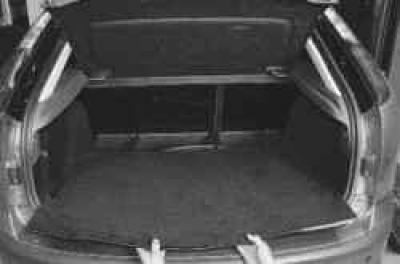
1. Open the trunk (it contains everything you need to change a wheel) and remove the trunk floor mat (or lift its back).
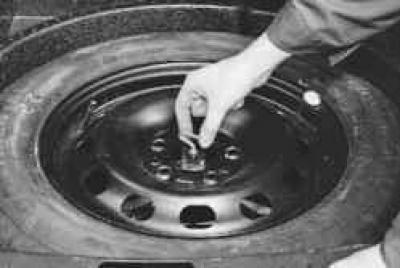
2. Turn away and remove a clamp of a spare wheel.
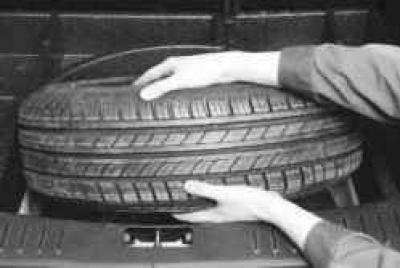
3. Remove the spare wheel from the trunk and place it next to the wheel to be replaced.
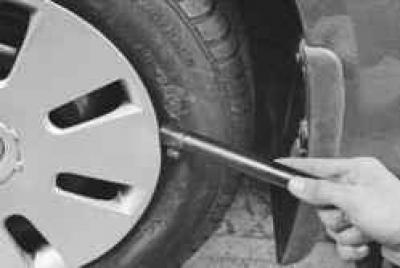
4. Pry with the pointed end of the wheel nut wrench (balloon wrench) the edge of the decorative cap..
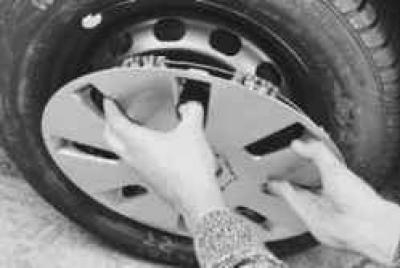
5.... and remove the cap, overcoming the force of its fixing spring.
6. Engage first gear and parking brake. Place a jack under the vehicle next to the tire to be changed (cm. «Using a jack»).
GOOD ADVICE: In order not to get dirty when changing a wheel, put on gloves and overalls, if your car has them.
7. On the opposite side, the car must be fixed by placing wheel chocks under the front and rear wheels so that the raised car cannot move forward or backward.
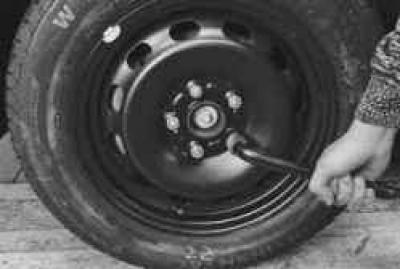
8. Using a jack, slightly raise the car, but so that the wheel requiring replacement does not come off the road. Use a wheel wrench to loosen the five wheel nuts.
USEFUL ADVICE: In order to make it easier to unscrew the wheel nuts, you can use your foot instead of your hands, stepping on the handle of the wheel wrench from above.
USEFUL ADVICE: To make it easier to loosen the nuts, we recommend purchasing a special wheel wrench with a telescopic handle. It is convenient to work with a cross-shaped balloon wrench.
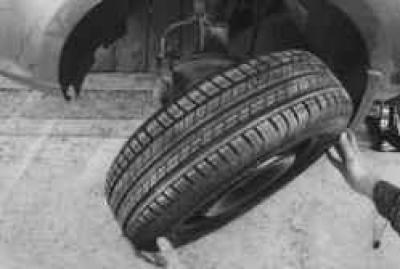
9. Raise the car with a jack so that the wheel is off the road, then completely unscrew the nuts and remove the wheel.
WARNING: Try to keep the car as little time as possible in a suspended state with the wheel removed.
WARNING: Jack up the vehicle only as far as necessary to remove and install a wheel.
WARNING: If working on soft ground, place a thick board under the base of the jack. Do not use bricks for this purpose: they break easily and the car can fall off the jack, seriously injuring you.
10. Install the spare wheel in place of the removed one, screw the fixing nuts up to the stop, but do not tighten them.
WARNING: When screwing on the nuts, make sure that their conical parts are aligned with the conical surfaces of the holes in the wheel disk, otherwise the nuts will loosen during movement and the wheel may be lost.
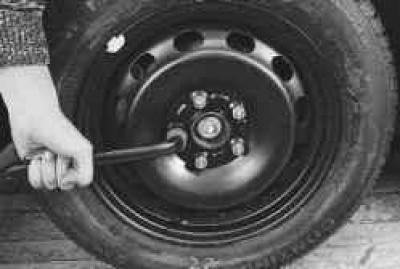
11. Lower the car and finally tighten nuts. Tighten the wheel nuts through one around the circumference. To avoid damage to the wheel rim, do not attempt to «hold out» wheel nuts by pressing the wrench handle with your foot.
USEFUL ADVICE: In order to feel the necessary tightening torque of the wheel nuts (tightening torque 130 Nm), use a torque wrench for the first time.
USEFUL ADVICE: Do not lubricate the fastening nuts - this can lead to their self-loosening while the car is moving.
12. Install the decorative cap.
13. Before you continue driving, be sure to check the air pressure in the tire of the installed wheel.
GOOD ADVICE: Tubeless tires are installed on the car. If you do not have enough tire mounting skills, we advise you not to try to do this work yourself. One damage to the sidewall - and you have to buy a new tire or insert a tube.
USEFUL ADVICE: In a desperate situation, you can use a special first aid kit for repairing tubeless tires without stripping or tire sealant. They must be used in accordance with the attached instructions.
USEFUL ADVICE: Why is a tubeless tire better than a tubed one? Firstly, a tubeless one descends very slowly during a puncture: you can, pumping up, drive for weeks with a nail in the wheel until it becomes possible to repair it. Secondly, when, with a very significant mileage, steel cord wires begin to protrude from a tubeless tire, it can still be used as a spare wheel. It is useless to insert a camera into such a tire: it will pierce already during the first inflation.
Visitor comments